Fertility and family planning
Hereditary cancers are more likely to be diagnosed at an early age, sometimes before starting a family. It follows that one of the main problems young cancer survivors face is the deterioration of fertility induced by cancer treatments. Additionally, BRCA+ women who choose to have their ovaries and fallopian tubes removed as a preventive measure are confronted with premature menopause and eliminate the possibility of becoming pregnant naturally.
Women who carry a BRCA+ mutation have the opportunity to preserve their fertility before and after a cancer diagnosis, and have access to targeted reproductive techniques. It is therefore important that you receive targeted counselling for (onco)fertility preservation and family planning before starting cancer treatment or before undergoing risk-reducing surgery.
There are currently no official guidelines regarding fertility preservation and family planning for patients with a BRCA+ mutation. The choice remains personal. Since these are complex decisions to make, discussing them with an (onco)fertility expert can help you get a complete picture of your situation and what is desirable to do.
Fertility preservation
For women who carry a BRCA (or similar) genetic mutation, preventive surgery and/or cancer treatments might make the fertility timeline shorter compared to the general population. In the absence of precise guidelines on this topic, early fertility preservation for BRCA+ carriers who wish to have biological children is a valid option to consider. In fact, a healthy pregnancy can be achieved using cryopreserved gametes or embryos also in the absence of functioning fallopian tubes or ovaries. However, the success of both is highly correlated with the age of the oocytes being used. As a result, early intervention is crucial.
Egg freezing involves retrieving a woman’s oocytes and then freezing them (cryopreservation). The process typically involves 8-12 days of controlled ovarian hyperstimulation to stimulate the development and maturity of multiple oocytes. These oocytes are then aspirated in a minimally invasive retrieval procedure. Once retrieved, the oocytes can be cryopreserved for deferred fertilisation or fertilised immediately via in vitro fertilisation (IVF) with cryopreservation of the subsequent embryos. Ovarian stimulation is not suitable for everyone. The fertility specialist will outline the options for each patient and explain any risks. If the woman is undergoing or is due to undergo cancer treatment, the oncologist will also be consulted.
If a woman is diagnosed with cancer, it may be useful to have ovarian tissue preserved in order to preserve her fertility, because the ovaries already contain the follicles that will later transform into oocytes. Surgical removal (of part) of an ovary is only considered in Belgium if a patient’s fertility can be restored after cancer treatment. Small fragments of the outer part of the ovary are frozen before cancer treatment. Egg production can be reactivated at a later stage by transplanting the preserved tissue into the other ovary. This fertility preservation technique offers a very good prognosis for the patient.
Admin info
- If you have to undergo a fertility preservation procedure and are affiliated to a Belgian mutalité, you are entitled to reimbursement in the following cases: a) if you have to undergo cancer treatment and you are a woman under 38 years of age, a man under 45 years or you are under 18 years old; b) if you have to undergo a risk-preventing salpingo-oophorectomy; c) if you have been diagnosed with borderline ovarian cancer, or another type; d) if you have testicular cancer; And)
- Reimbursement is provided for the collection, freezing and preservation of gametes or gonadal tissue. To benefit from the reimbursement, these procedures must be provided in a healthcare establishment that has signed an agreement with the INAMI. You will find the registered healthcare establishments in this list: https://www.inami.fgov.be/SiteCollectionDocuments/lijst_liste_toegetreden_adhere_centra_freezing.pdf
- In Belgium, the frozen embryos or eggs will be preserved for a period of respectively 5 or 10 years.
Family planning
Whether you are a woman or a man and you are diagnosed with a BRCA (or similar) gene alteration before having children, you may have some questions about passing the risk to your future children. You and your partner can choose from a variety of family planning options:
- Have your children without any intervention. In this case, since a BRCA (or similar) gene alteration is a dominant condition, there is a one in two chance that each of your children could inherit it.
- Prenatal testing: prenatal testing is done during pregnancy to check if the child has inherited a genetic alteration. Starting from the eleventh week it is possible to carry out an amniocentesis by biopsy of the placenta to identify a BRCA+ mutation. If the mutation is detected, it is up to the parents to decide whether or not to continue with the pregnancy.
- Preimplantation genetic testing (PGT): you can choose this option to avoid passing on the BRCA+ gene alteration to your children. PGT is a very early form of prenatal diagnosis that takes place during in vitro fertilisation (IVF) treatment. After fertilisation, the embryos resulting from the IVF treatment are checked in the laboratory for the presence of any abnormalities, including a BRCA gene alteration, before being implanted in the uterus.
There is no right or wrong decision! You should make the choice that best suits your needs, circumstances, feelings and beliefs.
Preimplantation genetic testing (PGT)
PGT is mainly performed on prospective parents who are at increased risk of having a child with a hereditary abnormality, or on prospective parents for whom having a child is more complicated because of a genetic problem. PGT involves screening embryos (fertilised eggs) for a specific genetic mutation, such as a BRCA1/2 mutation, before they are transferred into the uterus. PGT can be considered not only by women with a BRCA+ mutation but also by men with such genetic alteration. You must be aware that PGT is only possible in the context of in vitro fertilisation. This means that you cannot have a natural pregnancy and opt for PGT. At the same time, currently IVF with PGT is the only method to not pass the mutation on to your future (biological) children.
Opting for IVF with PGT is a deeply personal choice that only you and your partner can make after careful consideration and discussion.
The main stages of IVF with PGT are as follows:
- Initial consultations with a fertility specialist and with a genetic counsellor take place and a couple’s file is created. In this first phase all administrative aspects will also be explained.
- After the couple’s request has been discussed and approved and after the couple (or the person) has given its express consent to proceed, the PGT workup preparations will begin. In this phase, the lab collects DNA samples from the couple and appropriate family members and designs a test unique to each family. Typically, developing a PGT test takes several months, up to 12.
- Following the completion of workup preparations, the IVF cycle can then begin. Controlled ovarian hyperstimulation is performed to obtain a large number of eggs. As soon as there are enough mature eggs, they are collected from the ovaries (egg retrieval). If the woman takes the contraceptive pill, this must be stopped before the IVF cycle, according to the timing communicated by the fertility specialist.
- The retrieved eggs are fertilised with sperm by IVF (bringing eggs and sperm into contact) or ICSI (injecting a single sperm into a single egg). The fertilised eggs are cultured in the fertility laboratory to produce embryos.
- In order to carry out PGT analysis, a biopsy is performed on each embryo, by removing multiple small cells from each embryo of sufficient quality. Right after the biopsy, all embryos are frozen immediately since the PGT analysis takes about four weeks.
- The PGT analysis is performed. In this phase, the cells are analysed using the genetic test developed in the preparation phase. This phase normally lasts around four weeks.
- The embryo that does not have the genetic anomaly is implanted. If more healthy embryos are obtained, they are frozen and can be reimplanted at a later time.
Admin info
- In Belgium, the development of a PGT is only reimbursed once by the health insurance.
- In Belgium, the legal age limit for using PMA is 47 years (= 48 years minus one day). The age limit for an oocyte puncture is 45 years (= 46 years minus 1 day). The age limit for an embryo transfer is 47 years (= 48 years minus one day).

We can support you in various ways:
- Contact us via our helpline
- Join our online community group
- Contact one of our buddies
- Read the testimonials
Useful resources:
- Brussels IVF (UZ Brussel) – Diagnostic génétique préimplantatoire (FR) / Pre-implantatie genetische testing (NL)
- UZ Gent – DIAGNOSTIC GÉNÉTIQUE PREIMPLANTATOIRE (FR) / PRE-IMPLANTATIE GENETISCHE TEST (NL)
- UZ Antwerp – Pre-implantatie genetische test (NL)
- UZ Leuven – Préimplantation, diagnostic génétique et screening (FR) / Pre-implantatie genetische testing (NL)

 BRCA network asbl/vzw
BRCA network asbl/vzw